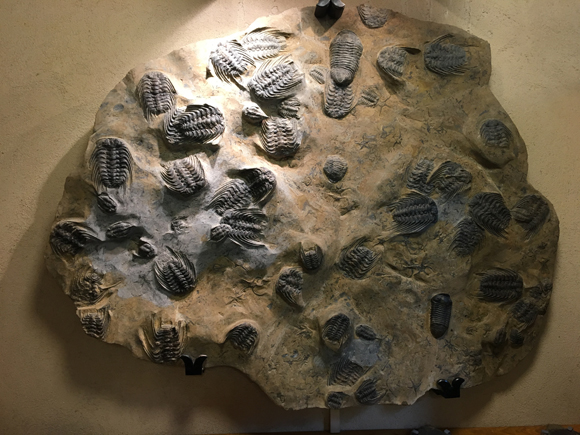The Selenopeltis Slab (Trilobites Galore)
In a far corner on the ground floor of the Oxford University Museum of Natural History, there can be found an amazing trilobite fossil exhibit. This piece of sandstone preserves the remains of three different genera of trilobites, a death assemblage that attests to the diversity and success of these marine arthropods. The fossil, which was acquired by the museum in 2005, is known as “the Selenopeltis Slab”.
Fantastic Fossils – The Selenopeltis Slab

Picture credit: Everything Dinosaur
Trilobite Fossil from the Ordovician Period
A slab of sandstone from the Mecissi-Alnif area of Morocco preserves the fossilised remains of three genera of trilobite. The sandstone was deposited some 450 million years ago (Ordovician), a time when invertebrates dominated oceanic biotas. The trilobite Selenopeltis is the most common fossil arthropod on the slab, it is characterised by the presence of long spines on both flanks of the body. The second genus Calymenella, is a large, elongate trilobite with an evenly rounded outline. The third type of trilobite represented in this mass death assemblage is Dalmanitina, a smaller animal with a long spine extending backwards from the posterior end of the pygidium (tail piece).
The sandstone slab also contains the fossilised remains of numerous brittle stars, a type of echinoderm related to starfish, (look for the small, disc-like bodies with five, slender, tapering arms).
Visit the award-winning Everything Dinosaur website: Everything Dinosaur.






Selenopeltis buchi, Calymanella and Dalmanitin?. I bought this slab 🙂